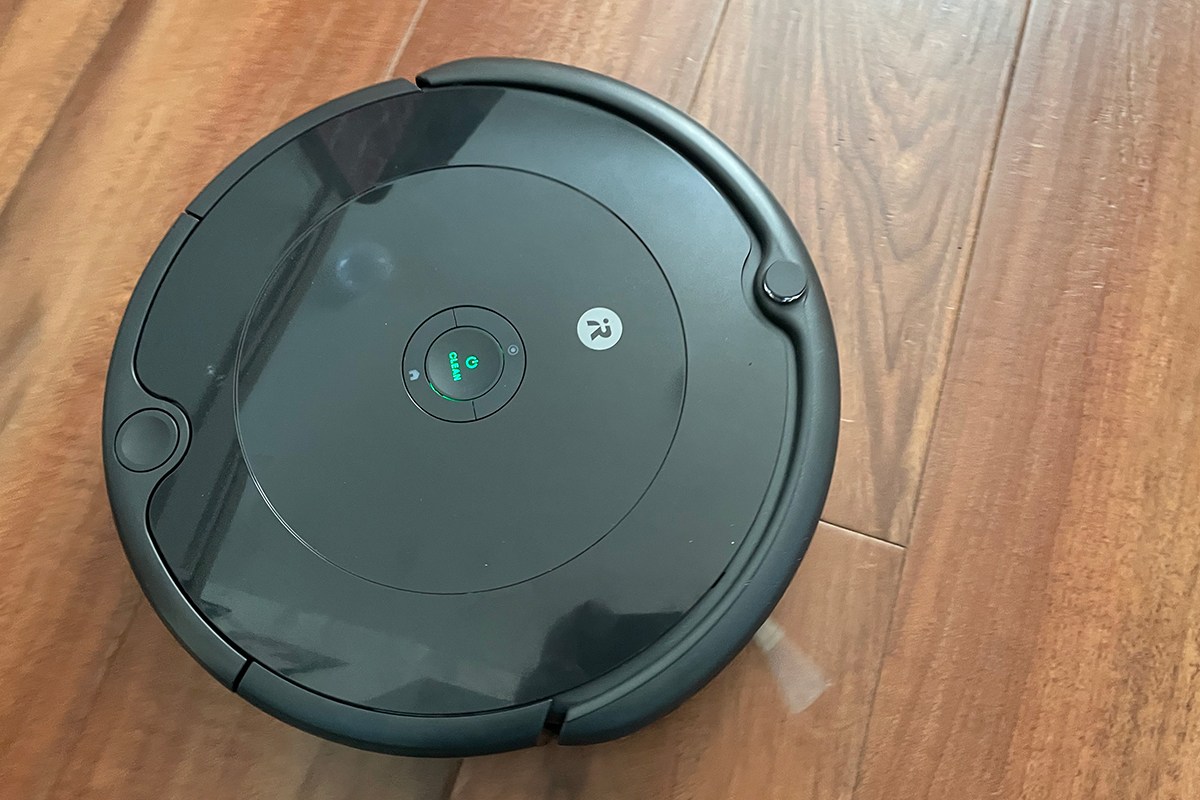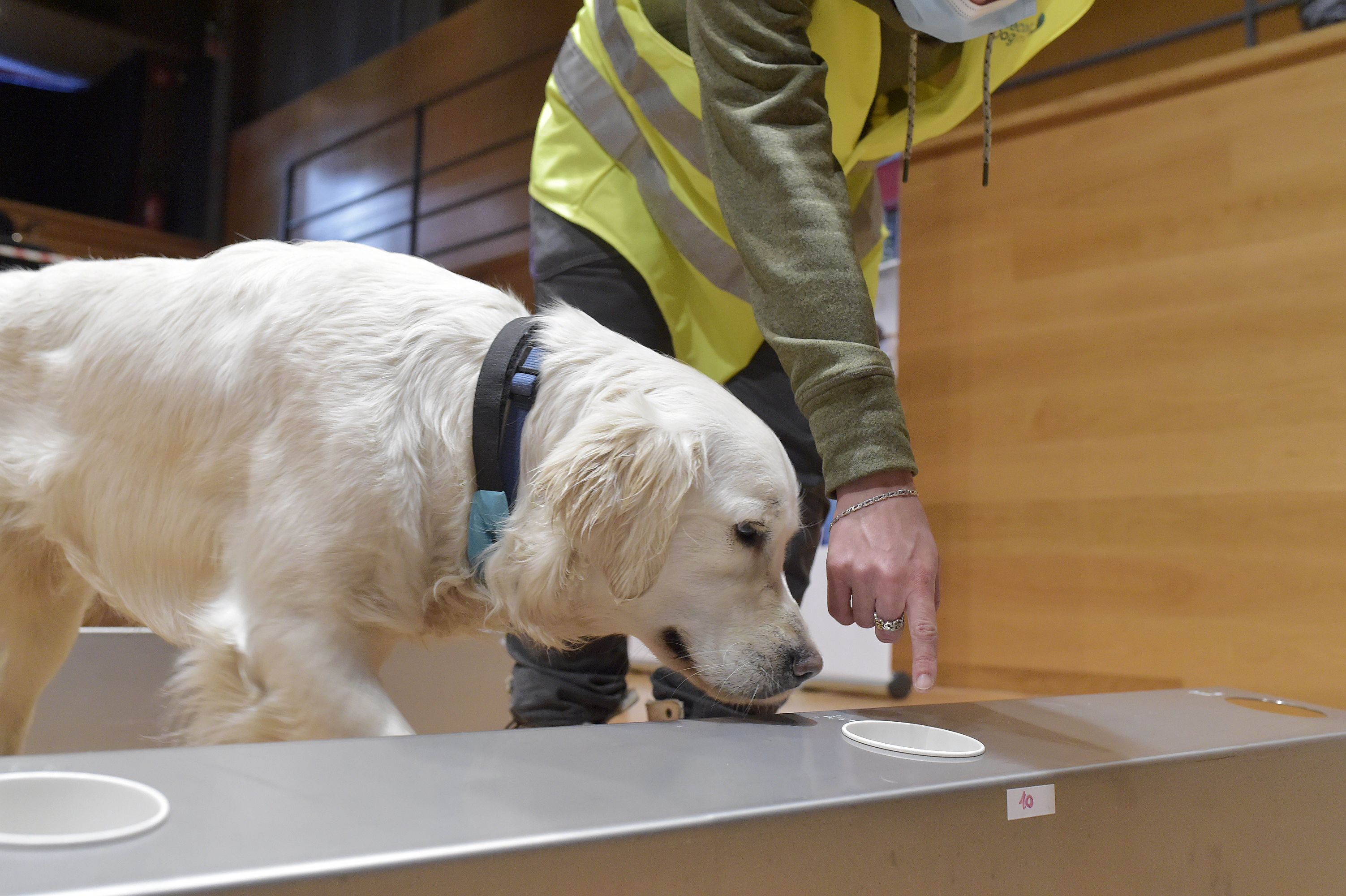Comparing the Roomba 675 and 694
Comparing the Roomba 675 with the Roomba 694 is a matchup of two entry-level robot vacuums with similar features and capabilities. Released in 2020, the Roomba 694 is a Wi-Fi-enabled non-mapping robot vacuum available from iRobot directly and from various retailers. The Roomba 675 is an older model from 2018 sold primarily in big-box stores and online. It isn’t available in new condition from iRobot, but can still be found new-in-box at some major retailers.
The BestReviews Testing Lab evaluated the Roomba 694 in areas such as suction, navigation and filtration and determined that it edges out the older Roomba 675 in most tests and measurements — but not by a lot. Unless a new-in-the-box 675 is available at a hefty discount, shoppers looking for a basic robot vacuum should go for the Roomba 694.
Roomba 675 vs. 694 specs
As 600-series Roombas, the Roomba 675 and 694 share many of the same specifications. The only specs in which they differ is the size of their dustbins and weight.
Roomba 675 specs
Product specifications
Battery life: 90 minutes | Dimensions: 13.4″ L x 13.4″ W x 3.54″ H | Dustbin capacity: 0.3 L | Weight: 7.59 lb | Navigation software: iAdapt 1.0 | Mapping: No | Self-emptying: No | Object avoidance: No | Scheduling: Yes | Selective room cleaning: No | Warranty: 1-year limited
The Roomba 675 measures roughly 13.5 inches across and just over 3.5 inches tall, similar to almost all Roombas ever made. It weighs about 7.5 pounds, heavier than the Roomba 694 and about on par with the Roomba i-series vacuums. It navigates with iRobot’s basic adaptive or bump-and-clean methodology, without mapping or object avoidance. The Roomba 675 can connect to Wi-Fi and the iRobot Home app, which allows for scheduling and voice control. When new, it had a one-year limited warranty.
Roomba 694 specs
Product specifications
Battery life: 90 minutes (75 in testing) | Dimensions: 13.4” L x 13.4” W x 3.54” H | Dustbin capacity: 0.35 L | Weight: 6.77 lb | Navigation software: iAdapt 1.0 | Mapping: No | Self-emptying: No | Object avoidance: No | Scheduling: Yes | Selective room cleaning: No | Warranty: 1-year limited
The Roomba 694 has the same shape and dimensions as the Roomba 675, 13.4 inches across and 3.5 inches tall, but it’s a little lighter at less than 7 pounds. Its dustbin is slightly larger, 0.35 liters compared to 0.3 liters. The Roomba 694 is also a bump-and-clean robot without mapping or object avoidance, but like the Roomba 675, it supports scheduling and voice assistants via the iRobot Home app and Wi-Fi. It has a one-year limited warranty.
Suction comparison
Neither the Roomba 675 nor the 694 have powerful suction. iRobot doesn’t make suction power ratings easily available, but its 600-series robot vacuums form the baseline against which its more powerful models are measured. Roombas, in general, rely on their three-stage cleaning system to remove dirt and debris. Two rollers pick up dirt and debris from floors and carpets and direct them into the suction path to the dustbin, while a spinning side brush collects dirt from corners or edges into the rollers.
The Roomba 694 performed adequately in our hands-on testing. It removed coffee grounds from medium-pile carpet and table salt from hardwood with little residue but struggled to grab hold of dry rice. Its side brush scattered loose debris, including breakfast cereal, out of its cleaning path, and it required multiple passes on both carpet and hard flooring to do the best job possible with all test materials. When it came to pet fur, the Roomba 694 showed little trouble on either carpet or hard flooring, but left visible hairs on low-pile rugs. It left some grit behind when vacuuming cat litter off of hard flooring.
The Roomba 675 has an extremely similar design to the 694, but it has been observed to do slightly worse in head-to-head comparisons. This is despite having the same roller design, the same suction, the same wheels and the same side brush as the 694. The difference, however, appears arguable.
Design comparison
The design of the Roomba 675 and 694 are similar except for two important differences. First, the Roomba 675 sports a flip-up carrying handle, allowing a user to easily carry the robot one-handed from room to room. The Roomba 694 lacks a handle or similar feature.
Second, the Roomba 694 has a bigger dustbin, 0.35 liters compared to 0.3 liters. The extra 50 milliliters is not much, but may allow a user to push emptying their 694 to another day rather than emptying it after every job, although we recommend you do so to ensure it won’t stop in the middle of a job.
Both vacuums are sturdily designed, with heavy drive wheels and a durable gray-and-black plastic body. However, their glossy finishes can attract fingerprints, and their bumpers tend to collect cosmetic scuffs.
Navigation comparison
Both the Roomba 675 and Roomba 694 use adaptive or bump-and-clean navigation. They follow a semi-random cleaning path and edge around furniture or corners until they bump into something that blocks their way forward. This makes them change to a new semi-random direction.
Bump-and-clean navigation has proven to be effective at keeping an area clean, as long as a robot vacuum is run frequently. In any single cleaning job, however, robot vacuums with this kind of navigation may miss long stretches of flooring while going over other spots again and again. We observed our Roomba 694 test unit repeating the same maneuvers around a table and chairs several times while ignoring an open patch nearby. This can be very frustrating to watch.
The Roomba 694 does not have mapping, nor does the Roomba 675. They can’t keep track of or remember the layout of your home. They have no real obstacle avoidance either. The Roomba 694 pushed along a child’s toy during testing and repeatedly bumped into the legs of our testers. To its credit, the Roomba 694 had no trouble negotiating transitions from hard flooring to carpet or vice versa and only had slight difficulty with the curled edges of a rug. As the Roomba 675 has the same navigation intelligence, wheels and sensors, it should perform similarly as well.
Filtration comparison
The Roomba 675 and Roomba 694 use iRobot’s AeroVac filters in their dustbins. These mesh filters are intended to catch particles in the vacuum’s path and prevent them from escaping back into the air. The Roomba 675 and 694 use the same size filter as all 600 series Roombas. These filters are not HEPA-type or high-performance filters and do not prevent small particulates less than 0.5 microns from escaping, which is less than ideal for allergy sufferers.
Features and cleaning modes
The Roomba 675 did away with separate “low” and “high” cleaning modes, instead using sensors and intelligence to increase suction on carpet or high-dirt areas. This feature has been carried over to subsequent models including the Roomba 694.
Both the Roomba 675 and 694, like most other Roombas, have a spot-clean mode, activated with the “Spot” button on their top plate. In spot-cleaning mode, a Roomba 675 or Rooma 694 placed on top of localized dirt will spiral outward up to 3 feet, negotiating any obstacles in the area, and then spiral back inward while removing the debris.
The Roomba 675 was notable among entry-level robot vacuums for skipping a handheld remote in favor of Wi-Fi connectivity and app control, a capability also found in the Roomba 694. Wi-Fi connections let the Roomba 675 communicate with the iRobot Home app, allowing for remote activation, status monitoring and scheduling, the same as the Roomba 694.
Both the Roomba 675 and 694 run on a rechargeable 1,800 mAH lithium-ion battery rated for 90 minutes of run time. In our testing we got only 75 minutes from the 694 before it returned to its Home Base charging dock, but this may have been a result of its work in a carpeted apartment rather than on bare floors. Both models recharge in two to three hours; our Roomba 694 test unit declared itself ready to go after two hours.
 While Wi-Fi and app control is nice, you can just as easily control Roombas like the 675 or 694 by picking them up, putting them down and pressing “Clean.” This is ideal for people who simply want appliances to work without fussing with apps or options.
While Wi-Fi and app control is nice, you can just as easily control Roombas like the 675 or 694 by picking them up, putting them down and pressing “Clean.” This is ideal for people who simply want appliances to work without fussing with apps or options.
Cleaning and maintenance
Maintenance and cleaning are similar between the Roomba 675 and Roomba 694. Both have dustbins that require frequent emptying and can be removed by a simple button on top of their chassis. However, the Roomba 675’s 0.3-liter dustbin should not be rinsed in water, while the Roomba 694’s can.
Both models have a bristle brush roller that should be checked regularly for tangled pet fur, thread and human hair. Both the brush roller and the rubber beater brush are easy to remove from the roller assemblies under the units. Both units should be checked for debris in their roller compartments, around their wheel axles and in their internal vacuum paths, and their sensors and charging contacts should be wiped with a dry cloth every week or so to ensure it performs well.
Price
The Roomba 675 is no longer sold new by iRobot. New-in-the-box models can still be found at brick-and-mortar Target stores or online via Walmart and Best Buy. The Roomba 675 had a list price of $279.99, but prices for new-in-the-box and refurbished models range from $150 to $200.
The Roomba 694 is available directly from iRobot at a list price of $274.99, although it is often discounted below $250 or even $200.
Bottom line
The Roomba 675 helped popularize features such as Wi-Fi and smart control in iRobot’s entry-level robot vacuums, like the Roomba 694. However, it seems that iRobot is no longer actively manufacturing the 675, while the Roomba 694 is still readily available. This, combined with the Roomba 694’s somewhat better results in cleaning and performance tests, makes the Roomba 694 the winner of this matchup.
Want to shop the best products at the best prices? Check out Daily Deals from BestReviews.
Sign up here to receive the BestReviews weekly newsletter for useful advice on new products and noteworthy deals.
Jmar Gambol writes for BestReviews. BestReviews has helped millions of consumers simplify their purchasing decisions, saving them time and money.
Copyright 2023 BestReviews, a Nexstar company. All rights reserved.


























